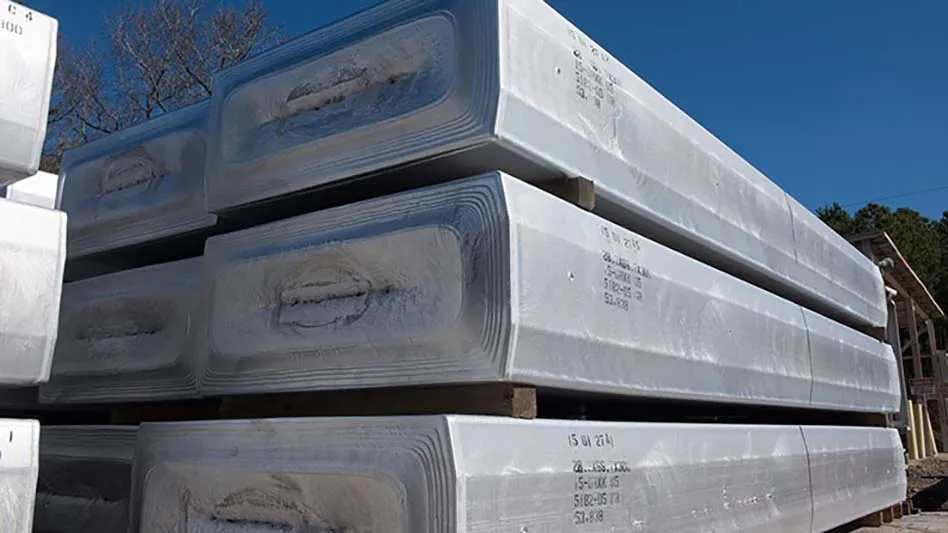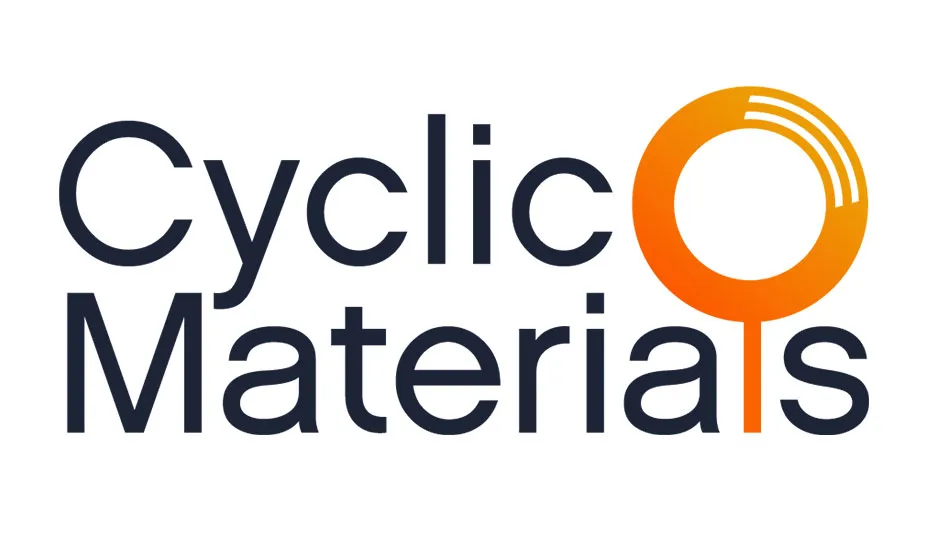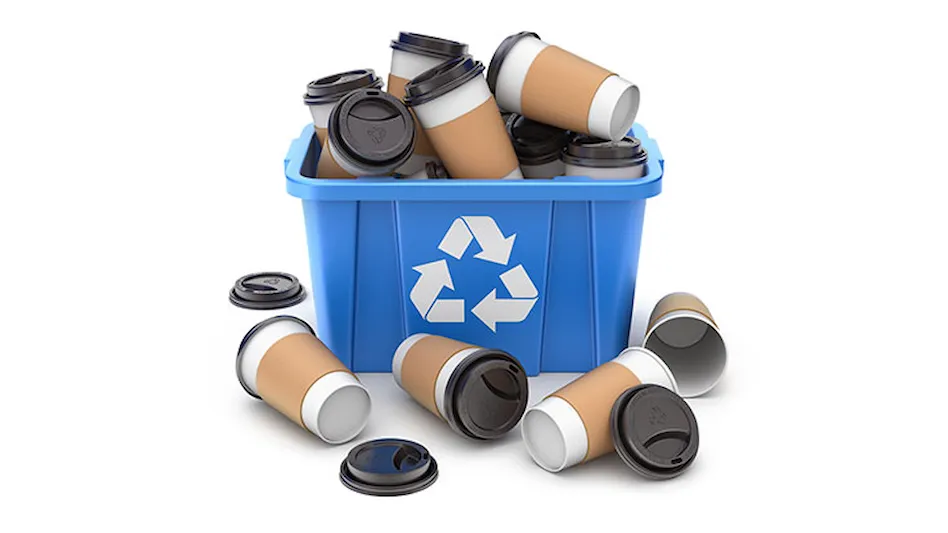It takes a more rugged machine to process and bale ferrous scrap than other, lighter materials. Ferrous balers come in both portable and stationary models, and some are combined with a guillotine shear and have logging capabilities. These shear/baler/logger combinations offer processors a great deal more versatility.
While a two-ram baler can bale light ferrous, it cannot handle the heavy materials like a ferrous baler can. Ferrous balers differ from two-ram balers in several ways. First, they are built more ruggedly to handle scrap metal; secondly, they usually have a long charge box that also serves as the baling chamber; and finally, bales are not tied off.
FERROUS BALERS
Ferrous balers can be categorized as two- or three-compression or three-ram. In a two-compression model, one side or wing door squeezes the material along with the main ram. In a three-compression model, both sides or wing doors squeeze the material along with the main ram, or one side, a top lid and the main ram. All rams and compression tops and sides are hydraulically operated. A three-ram model has a main compression ram, another one that compresses from the top, and a third one that ejects the bale. Material is fed into the baler with a crane.
Ferrous balers produce bales that are normally 24-inch cubes, and are about 60 to 70 pounds per square foot in density.
Some things to consider when buying a ferrous baler are portability, power units, crane features and pre-loading options.
A ferrous baler can be portable or stationary, and there are distinct reasons for buying one over the other. Benefits of a portable ferrous baler include the ability to take the baler out of the yard to where piles of scrap are located. In this configuration, the baler is powered by a 150 to 200 horsepower diesel engine. The portable model generally costs about $135,000 to $255,000.
Stationary models are ideal if the baler is generally going to remain in the yard or operate indoors. The stationary model can be operated electrically and that’s a plus with many processors because it means low noise and less air pollution. In addition, processors don’t have to worry about diesel fuel. Because of the motor configuration and the lack of wheels, the stationary baler is slightly less expensive than the portable model.
An integrated crane – one that is attached to the baler – is an option that processors should investigate thoroughly. “We don’t normally think about it, but there is going to be an operator in that crane cab all day,” says one manufacturer, “so the processor should at least consider the comfort level of that operator.”
Creature comforts such as air conditioning, heat, ergonomic controls and simply a comfortable seat are items to consider.
The crane should also have an adequate reach – somewhere between 20 and 25 feet. A longer reach means less double handling of material. In addition, look for crane cabs that rise up slightly for a better viewing range.
While having an integrated crane seems ideal, some warn that having one could limit the productivity of the baler if it is solely relied upon to feed the baler. “It’s okay if you are taking a portable baler out to process about 40 to 50 tons of material,” says one processor, “but if you expect to process more than that, then you should be using a separate, supporting crane.”
Another area to consider is the size of the charge box. Most are around 12 to 15 feet in length. The bigger the box, the bigger the target for the crane operator.
PRE-STAGERS
In order to increase the productivity of ferrous balers, manufacturers have added devices so that scrap material can be pre-staged for processing. Currently, there are two ways to do this.
The first way is by using a tip pan, which is basically a hopper into which scrap is loaded. When the baler is ready for the next load, hydraulic arms tip the scrap upward so that it slides down the pan and into the baling chamber. Tip pans can be side or front mounted and are only found on stationary ferrous balers because they are too difficult to transport on portable balers. Front-mounted tips pans, however, do allow for increased portability.
The second way is by using a relatively new method called a pre-hopper. This device pre-stages scrap above the baling chamber. When it is ready to be baled, a chute opens and the material falls into the baler. The chute closes and is ready to be loaded once more. Because it is gravity operated and above the baler, this type of pre-stager can be added to a portable baler.
SHEAR/BALER/LOGGERS
A choice that is becoming popular with ferrous scrap processors is the shear/baler combination, because it gives a yard more flexibility. These machines have a shear at the ejection end with 300 to 1,000 tons of shearing force. In this way, when shearing needs to be done, material in the hopper can simply be pushed by the ram in the form of a log and through the ejection opening as the shear does its work. If baling is the priority, the baling capabilities of the machine can be used.
Processors and manufacturers warn that shear balers are not for everyone, but are targeted toward smaller yards. And high-capacity operations should not rely on one alone to meet their processing needs, because the shear/baler can be overwhelmed easily. Shear/balers are normally recommended for yards that are processing about 5 to 10 tons of material per hour.
Processors also have to be sensitive to the narrow throat of a shear/baler, which can limit the speed of shearing.
Some shear balers have a sliding door that goes in front of the shearing knife so that the baling pressure is against the door and not the knife.
Affordability, however, is a major selling point of a shear/baler. Models can be bought for as little as $300,000 – far cheaper than buying a baler and a shear separately. Some shear/balers can cost as much as $1.5 million, depending on capacity.
Another capability of some ferrous balers is logging. A log is a long, soft bale that is made to compact scrap so that it can be more efficiently transported to a shredder. Logs are usually 4 to 6 feet in length and are about half as dense as ferrous bales. Look for balers that can easily switch the baling pressure from one processing method to the other.

Explore the February 1997 Issue
Check out more from this issue and find you next story to read.
Latest from Recycling Today
- Domestic ferrous scrap market remains on ‘sideways’ trajectory
- GFL reports revenue increase in first quarter
- Guardian Data Destruction names new CEO
- Bulking up
- Greenmantra says polymer additives optimize customer’s HPDE pipe
- Pure Loop celebrates ISEC shredder-extruder at NPE
- New Alpla PET wine bottle cuts carbon emissions
- Ascend Elements, Call2Recycle to offer customized EV battery services





